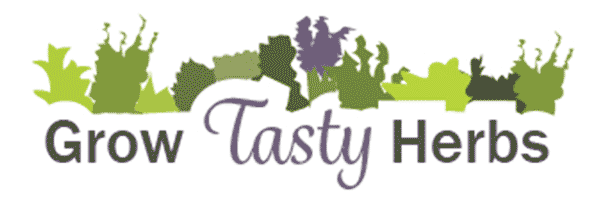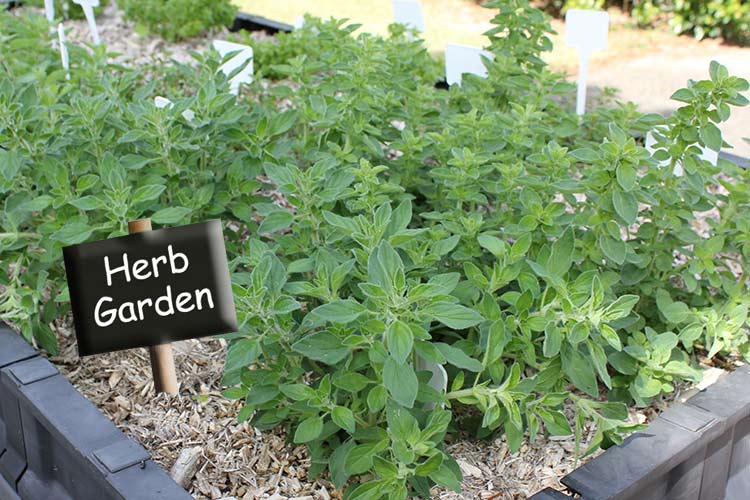There was a time when the only way to access herbs to use in flavouring our food was to grow them. These days we have a huge choice of both fresh and dried herbs available to us in supermarkets and green grocers, and yet the interest in growing herbs at home is stronger than ever.
Fresh herbs are great and generally are very rewarding to use in cooking. As our cooking becomes more creative our desire for fresh flavourful herbs is also stimulated. Bunches of fresh herbs bought in green grocers generally need to be used within a couple of days of purchase, so the best way to have a ready supply of the herbs we want to cook with is to grow them at home.
Growing herbs is actually relatively easy and certainly far easier than growing vegetables. Most annual herbs have a longer growing season than most annual vegetables, making them more forgiving of a little gardeners neglect. Forget to water the lettuce for a few days and you risk it turning bitter, forget to water the parsley and it will eventually wilt but the flavour will be fine.
Many herbs are also perennial meaning they last for 3 or more years. Rosemary, lavender, some basil’s, oregano, thyme, mints, chives, sage, are all examples of perennial herbs which can last for many years in the right growing conditions – including in well-tended pots.
Parsley can often be grown as a biannual meaning it will last for 2 years, and others like coriander, dill, fennel and many basil’s are annuals, lasting only one year in most cases.
Even if you choose to replant all of your herbs every year, they will still be easy to grow and in most climates you will get a fairly long growing season from them – 10 to 18 months of production, as opposed to 3 to 6 months for most vegetables.
Regardless of whether you choose to grow annuals, perennials or a mix of both, most herbs are easy to grow and very rewarding.
Many herbs take up very little space in a garden so can be tucked into any reasonably sunny spot, and this also makes them very suitable for growing in pots.
Many herbs are also highly ornamental so can be very attractive in an ornamental garden. Parsley and chives make wonderful low border plants, oregano, thyme and mint all make great ground covers and are good between stepping stones where the aroma is released when walking past. Annual basil, dill, fennel and sage can all be highly ornamental plants with coloured or textured foliage which is highly scented to brush past. Chilli needs to be planted out of reach of children, but the brightly coloured fruit can be very ornamental.
Coriander, annual basil and parsley can all be attractive plants in their own right, but if allowed to go to flower will be highly attractive and bring the bees into the garden. Various thyme’s, mints and chives will also flower very prettily and are attractive to bees and butterflies.
Rosemary, lavender and perennial basil can all be used as ornamental shrubs, in scented gardens or as small hedges kept in shape by constant pruning for the kitchen (less so for the lavender!).
By blending some herbs into the ornamental garden it can easily become a true cottage garden with useful herbs and flowers growing happily side by side. The herbs will generally need no further care than the flowers will.
Many of the culinary herbs we are familiar with and wish to grow have European, particularly Mediterranean origins. Things like lavender, rosemary, thyme, oregano and sage tend to do best in similar climates with hot dry summers and cool wet winters. They can be remarkably tolerant of a wide range of climate conditions, but their lifespan may be significantly shorter. Sage, lavender and thyme often do best treated as annuals in the tropics and subtropics, but will last significantly longer in the less humid southern regions of Australia.
Most herbs, like most plants in general will perform better in good soils with a little attention to their water and fertiliser requirements. The Mediterranean herbs mentioned above will be quite drought tolerant and have a good tolerance for poorer soils and less fertiliser, but will perform better if given a little fertiliser. These herbs (lavender, rosemary, thyme, oregano and sage) will also prefer full sun in all regions of Australia, while many of the other herbs will appreciate part sun in the hotter regions.
To get good quality leaves for use in the kitchen, all herbs will benefit from good growing conditions. This includes good quality soil with rock minerals and organic matter added if needed. Soils with mineral deficiencies are very common in Australia and can lead to poor plant performance or reduced flavour. The flavour we love in herbs is based on complex chemicals within their leaves and if key minerals are deficient flavour is likely to be affected before plant health is noticeably impacted. Most proprietary fertilisers have a limited range of nutrients included and may not include the trace elements needed for good flavour. Addition of small amounts of rock mineral supplements is recommended occasionally when growing herbs for culinary or medicinal purposes.
Herbs that are being heavily pruned for the kitchen will have a higher need for water and fertiliser than will those that are only occasionally harvested. To keep these herbs healthy, tasty and producing abundantly, ensure they have plenty of water and give them some additional compost, fertiliser or rock minerals every month or two to keep them strong. A regular spray with a seaweed spray or similar will also be appreciated but is not essential.
For the beginner gardener, herbs are a trouble free place to start. That handful of fresh basil, the sprig of rosemary or the chilli as needed straight from the garden to the kitchen is highly rewarding and is pretty easy for even the brownest of brown thumbs.
*Article published by Kate Wall






